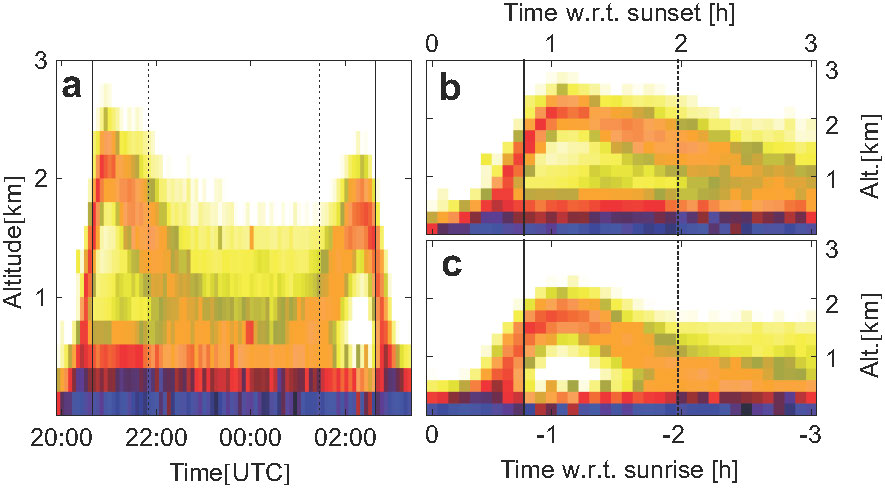Flight behaviour of Common Swifts
By making use of long-term weather radar observations in the Netherlands, we discovered that common swifts (Apus apus) make ascents to high altitudes (up to 3 km) both at dawn and dusk. The dusk ascent of swifts was previously considered to be related to the onset of nocturnal roosting, which is performed on the wing. The discovery that swifts also climb to high altitude at dawn puts the ascents into a new perspective.
In the paper Twilight ascents by common swifts, Apus apus, at dawn and dusk: acquisition of orientation cues? the behaviour is described in detail, and alternative hypotheses are formulated regarding the functional significance of the ascents.
For further information also see this press release

